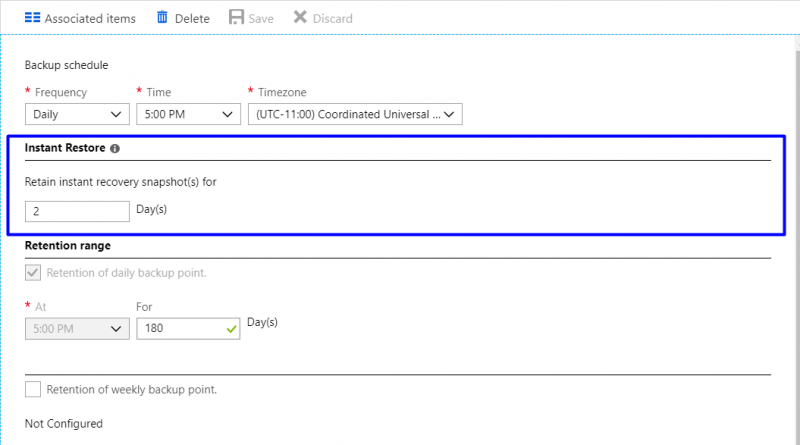Instantly restore your Azure Virtual Machines using Azure Backup
Today, we are delighted to share the release of Azure Backup Instant Restore capability for Azure Virtual Machines (VMs). Instant Restore helps Azure Backup customers quickly recover VMs from the snapshots stored along with the disks. In addition, users get complete flexibility in configuring the retention range of snapshots at the backup policy level depending on the requirements and criticality of the virtual machines associated, giving users more granular control over their resources.
Key benefits
- Instant recovery point: Snapshots taken as a part of the backup job are stored along with the disk and are available for recovery instantly. This eliminates the wait time for snapshots to copy to the vault before a restore can be triggered.
- In-place restore capability: With instant restore, users also get a capability to perform in-place restore, thus, overwriting the data in the original disk rather than creating a copy of the disk at an alternate location. It is particularly useful in scenarios where there is a need to rollback a patch. Once the snapshot phase is done, users can go ahead and use the local snapshot to restore if the patch goes bad.
- Flexibility to choose retention range for snapshots at backup policy level: Depending on the operational recovery requirements of VMs, the user has the flexibility to configure snapshot retention range at a VM backup policy level. The snapshot retention range will apply to all VMs associated with the policy and can be between one to five days, two days being the default value.
In addition, users get Azure Backup support for Standard SSD disks and disks up to 4TB size.
How to change the snapshot retention period?
We are enabling this experience starting today and rolling it out region by region. You can check the availability in your region today.
Portal:
Users can change the snapshot retention to any value between one and five days from the default value of two days.
Next steps
- Learn more about Instant restore capability.
- Learn more about Azure Backup.
- Want more details? Check out Azure Backup documentation.
- Need help? Reach out to Azure Backup forum for support
- Tell us how we can improve Azure Backup by contributing new ideas and voting up existing ones.
- Follow us on Twitter @AzureBackup for the latest news and updates
Source: Azure Blog Feed

